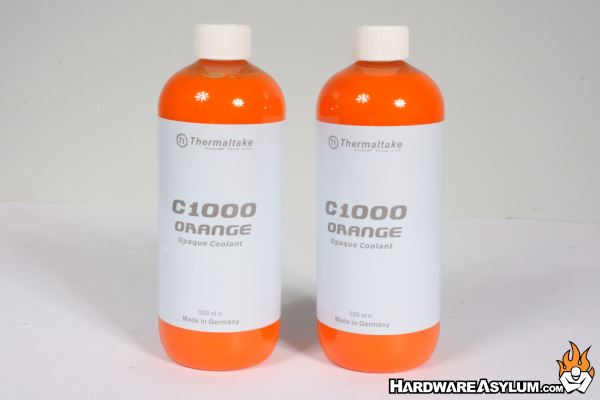How to Build Your Watercooling Loop? What is Needed
Author: Dennis GarciaSecondary Components - Tubing
A Secondary Component is anything used to physically transport water from one primary component to another. This includes things like tubing and fittings and choosing one will dictate the other.
For this there are currently two choices available, Hardline or Softline. Both have their benefits and drawbacks and neither is mutuality exclusive to the point where one choice is better than the other. It all comes down to purpose and what you are trying to accomplish.
So which do you choose?
Established modders and watercooling zealots will all say that hardline is the only way to go and anyone saying otherwise shouldn’t be watercooling their PC in the first place. This is because they see watercooling as an elitist activity where the quality of your mod is more important than the benefits you get from it. This can be seen in a variety of situations from casemodding competitions where the judges only care about the mod and ignore the components to the open Internet where people will get bullied out of a community for not executing their mod very well. Read: your PC is now a watercooled work of art.
Personally I feel the enthusiast community has ruined modding by idolizing certain modders in a dying segment. This in turn created a hostile environment for newcomers and drives many of them away. Hopefully with the resurgence of modding this will change.
I mention all of this because the cooling method you choose will often be met with an underlining expectation level that you may not be able to attain.
Softline or flexible tubing has been around since the very beginning and for a time was the only way to watercool your PC. Most modders will pick this option because it is cheap and easy to work with while still allowing good cooling performance. You will have difficulty executing artful loops with softline but it still gets the job done.
You will have two basic tubing sizes to choose from and will be determined by the inside diameter (ID) of the tube. 3/8” (10mm) or 1/2“ (13mm) There are other sizes available but those two are the most common in the DIY watercooling market. Of these you will encounter two wall thicknesses, 1/8“ or 1/16“.
Knowing this will also determine which type of fittings you will use.
Generally speaking the 1/8” wall tubing is easier to use and will allow you to make tighter bends in your system before the tube collapses. The thinner wall tubing is sometimes required with certain compression fittings and may require that you install stints in the line to ensure the tubing won’t collapse.
If you can you will want to avoid the Vinyl tubing available at the hardware store and go with a flexible PVC based tube. In most caes the vinyl tubing is too stiff and will cause more trouble than it is worth.
Pros:
Easy to use
Variety of fittings from barbs + clamps to compression
Cut with simple tools
Easy to reconfigure
Cons:
Tubing tends to become cloudy after awhile
Difficult to route hoses exactly where you want
Hardline or rigid tubing can be made from anything such as glass and metal to some of the more common options like Acrylic and PETG. Some of these can be bent using special tools but for the most part rigid tubing is designed for straight runs that can be placed wherever you want.
Like with softline you have a variety of sizes to choose from with 3/8" and 1/2" making up the majority. You will need to pay attention to the outer diameter of the tubing to ensure compatibility with your fittings and unlike sofline Imperial and Metric measurements do matter.
The unfortunate side effect of using hardline tubing is the level of effort needed to create a loop. When dealing with softline you can simply cut a length of tubing and away you go. However with hardline you must plan out exactly where a tube should go and since estimating accurate lengths is difficult there is increased waste and the inevitable junk tube because of a bad bend or being too short.
Pros:
Looks great
Excellent durability
Ability to route lines where they need to go
Internet fame if done correctly
Cons:
Difficult to reconfigure
Expensive cost of entry
Implied expectations
Limited fitting options
Requires special tools
My Suggestion: Look at the purpose of your loop and make a decision
It is generally accepted that if you are using hardline tubing you are doing so to make your PC look good and that if you aren’t going to take it serious you have no business doing it. Since this is likely your first attempt at watercooling I would strongly suggest going the sofline route and then upgrading to hardline later.
Unless you are looking to do something special with your water loop simple distilled water is more than sufficient. You may eventually get critters growning in the loop and is why most companies suggest using a specialized coolant that will not only protect against corrosion but also keep things from growing.
The only word of caution is that if you are using PETG you will want to stay away from glycol based coolants as they can damage the tubing.

My Suggestion: pick what you like and expect to change it every 6 months to a year.
Many manufacturers will suggest that you use certain coolants to protect the plastics so be sure to take that into consideration.

